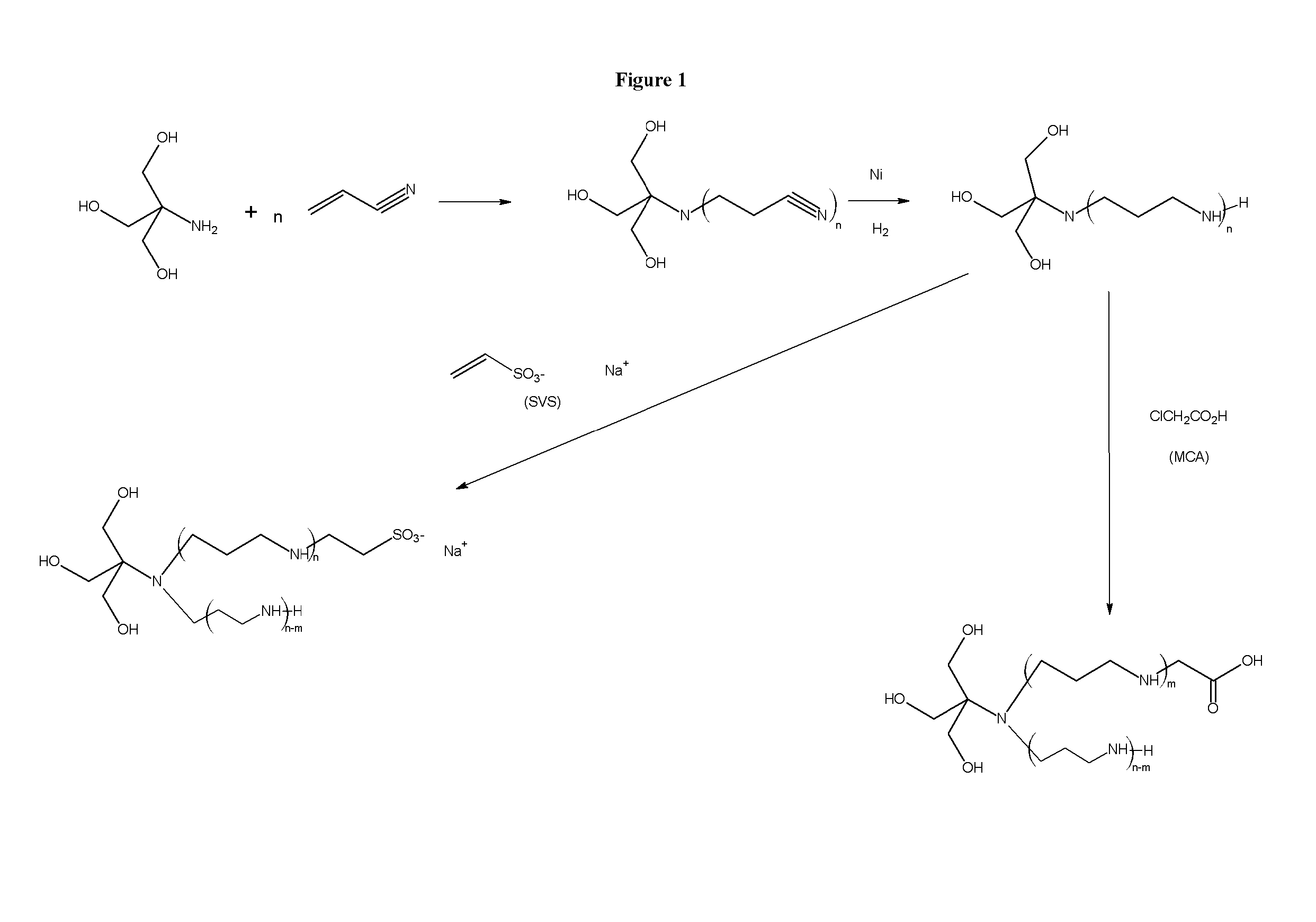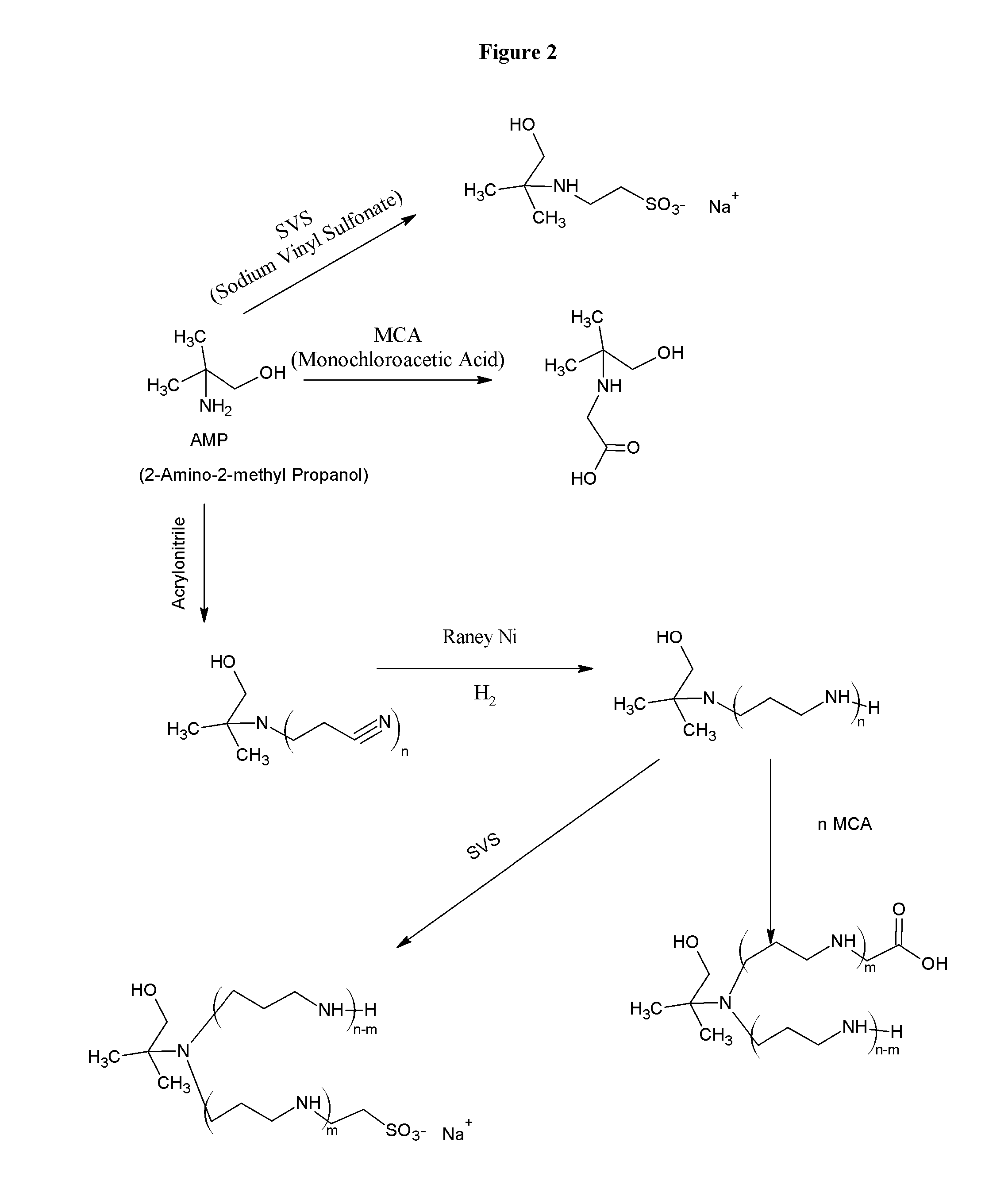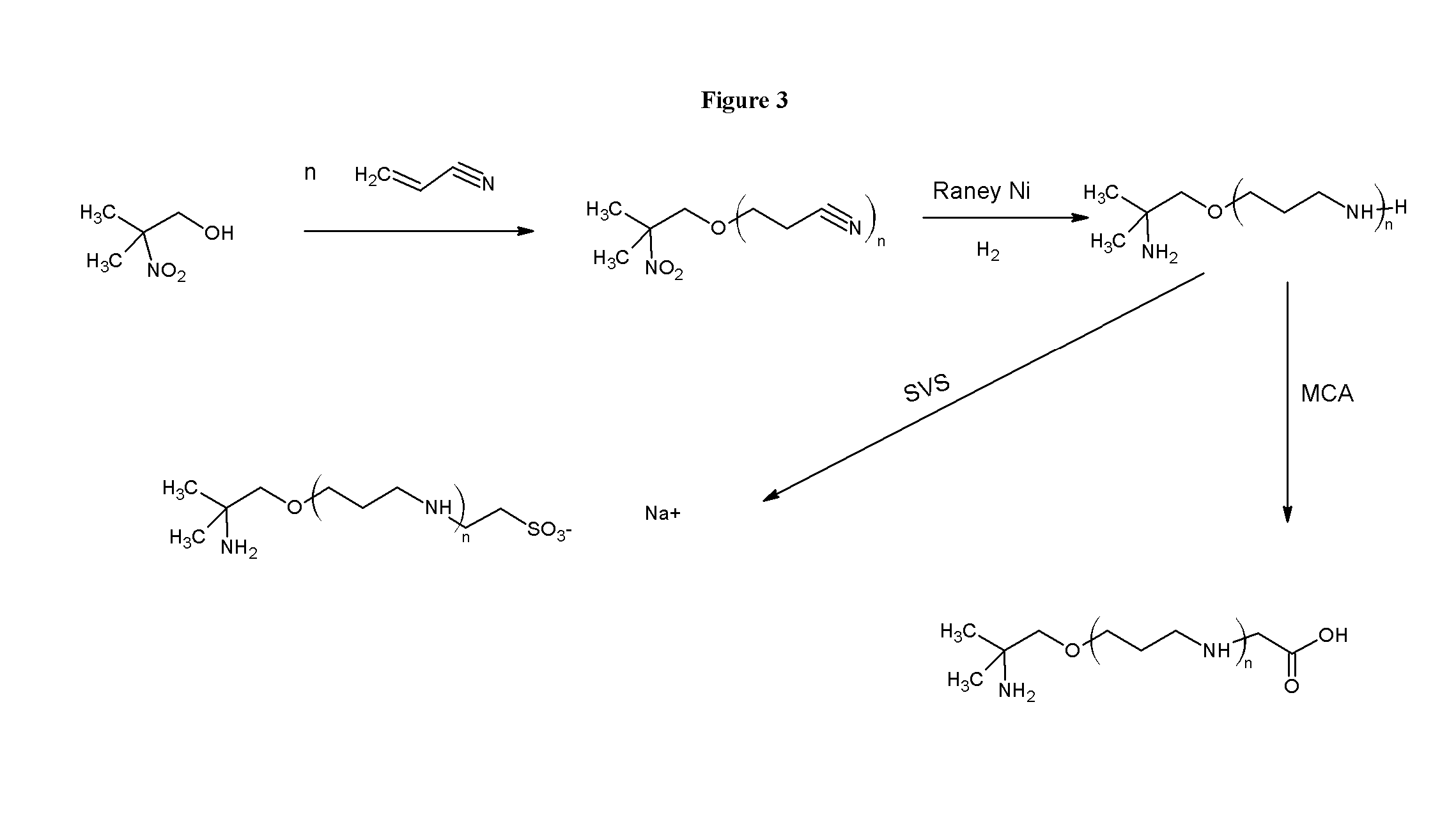Biological buffers with wide buffering ranges
a buffering range and biological technology, applied in the field ofamines, can solve problems such as play, and achieve the effects of reducing chelation and other negative interactions, enhancing buffering capacity, and improving buffering rang
- Summary
- Abstract
- Description
- Claims
- Application Information
AI Technical Summary
Benefits of technology
Problems solved by technology
Method used
Image
Examples
Embodiment Construction
[0049]Combining amines with monochloroacetic acid (MCA) or sodium vinyl sulfonate (SVS) results in products are zwitterionic buffers that can buffer in both acidic and basic pH conditions. A limited number amines are currently used for this purpose, such as, tromethamine and ammonia. The reaction of amines, alcohols, and aminoalcohols with acrylonitrile (via the Michaels Addition), followed by reduction results in amines and polyamines that have a broad buffering range. The further derivatization of the amines and polyamines with MCA and SVS yields a further crop of amine buffers with desirable properties. One skilled in the art will recognize that MCA and sodium monochloroacetic acid (SMCA) can be used interchangeably.
[0050]The reaction of tromethamine as described above yields the products in FIG. 1. In step 1 in FIG. 1 where the acrylonitrile is added to the amine a branched structure wherein the addition of acrylonitrile results in a tertiary amine is shown. In reality, particul...
PUM
| Property | Measurement | Unit |
|---|---|---|
| structure | aaaaa | aaaaa |
| pH | aaaaa | aaaaa |
| stability | aaaaa | aaaaa |
Abstract
Description
Claims
Application Information
 Login to View More
Login to View More - R&D
- Intellectual Property
- Life Sciences
- Materials
- Tech Scout
- Unparalleled Data Quality
- Higher Quality Content
- 60% Fewer Hallucinations
Browse by: Latest US Patents, China's latest patents, Technical Efficacy Thesaurus, Application Domain, Technology Topic, Popular Technical Reports.
© 2025 PatSnap. All rights reserved.Legal|Privacy policy|Modern Slavery Act Transparency Statement|Sitemap|About US| Contact US: help@patsnap.com



